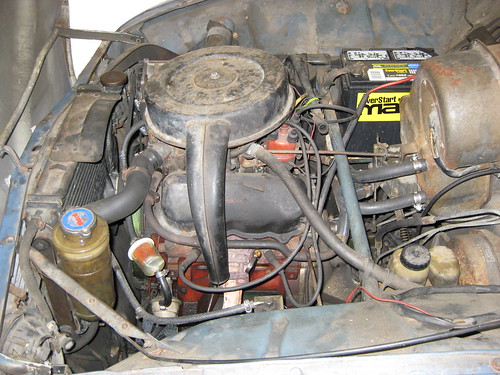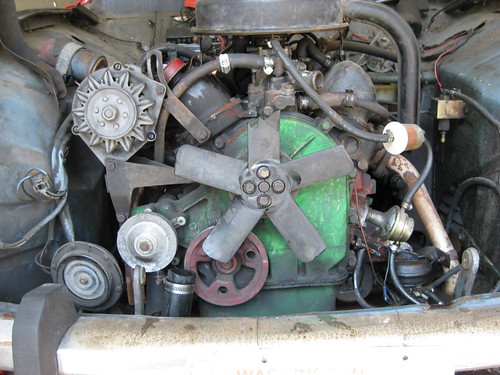Engine bay:

The V4 is quite a stubby powerplant, which is why they used it -- earlier versions of the car had a 3-cylinder 2-stroke, so they needed something that would fit in roughly the same length. The long snout on the air cleaner is for intake preheat. No fancy flapper valves here; you point it at the exhaust header in cold weather, and in hot weather you rotate the air cleaner cover so it points somewhere else.
Front end with the hood and grille panel removed:

Removing the hood and grille panel is a 5-minute operation that requires only a screwdriver. It makes the car a little easier to work on; access really isn't that bad by modern standards, but the engine compartment has a nearly complete floor that's an integral part of the unibody, so you can't reach up from below. This car has a bit of front end collision damage as some of you will probably notice.
With the radiator out and fan belt off:

The accessory drive arrangements on this engine are quite unusual. The crank nose doesn't protrude outside the timing cover, so instead the accessories are driven by the balance shaft, which is internally geared to the crank. That's the red pulley at bottom left. The fan is mounted on a free-spinning shaft incorporated into the timing cover.
As you can see the fan has a blade missing. As far as I can tell it went into the radiator when the car was hit; the radiator has damage that's pretty obviously from being pushed into the fan. Saab fans seem to be made of unobtanium so I'm thinking of doing an electric fan conversion. That little shallow-pitch fan with no fan clutch never cooled these cars all that well in traffic, anyway.
